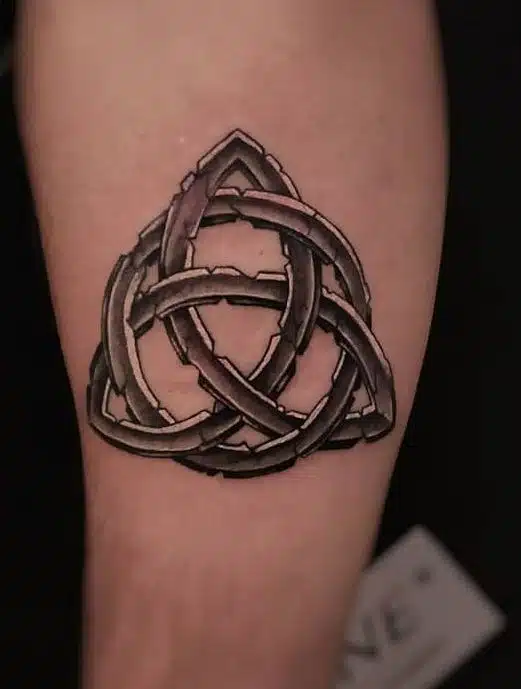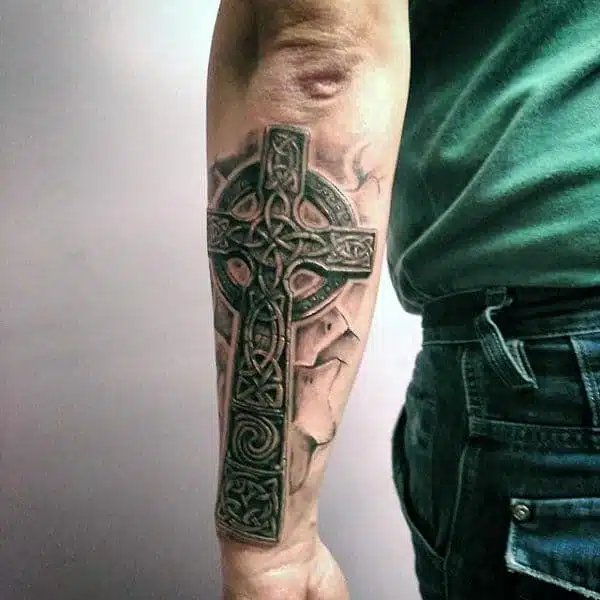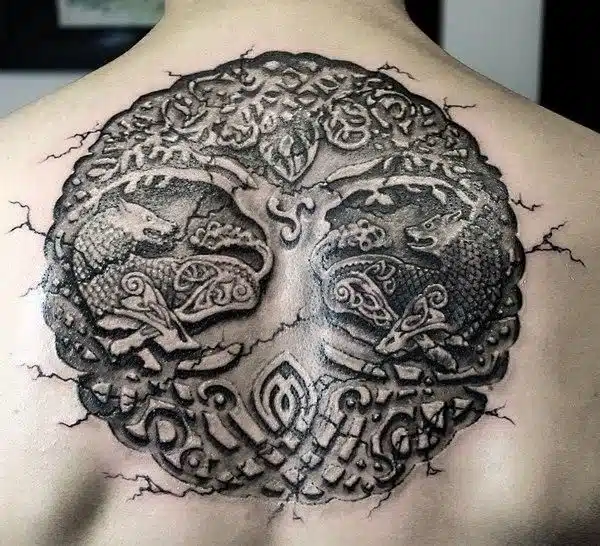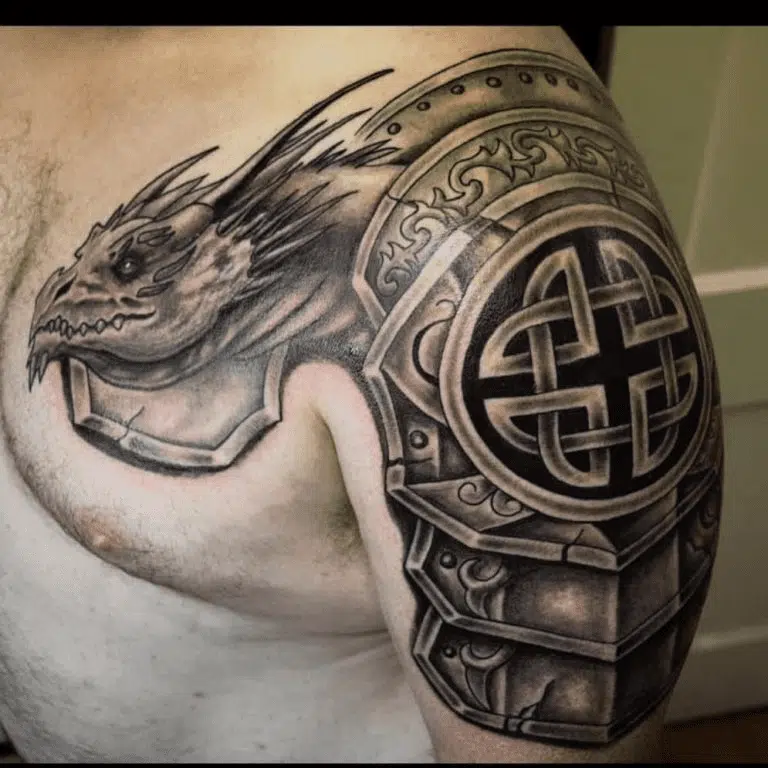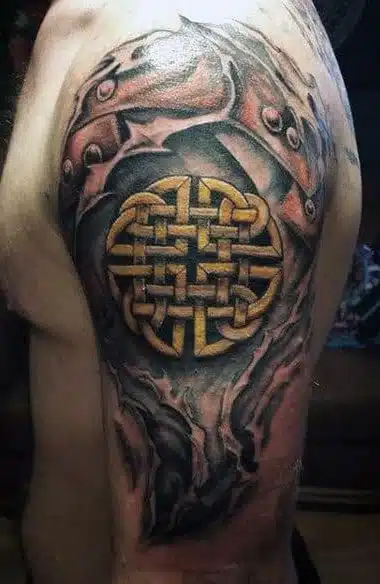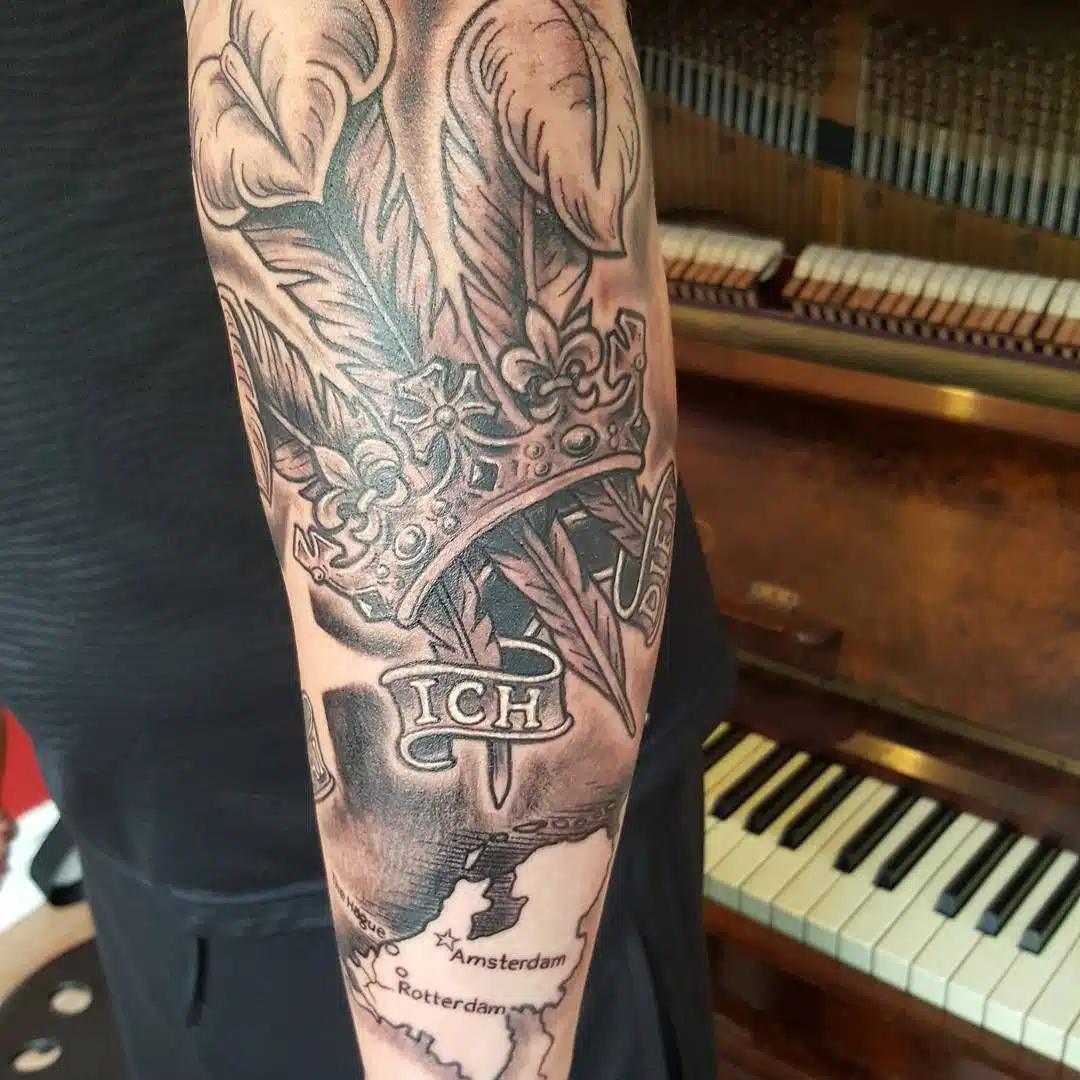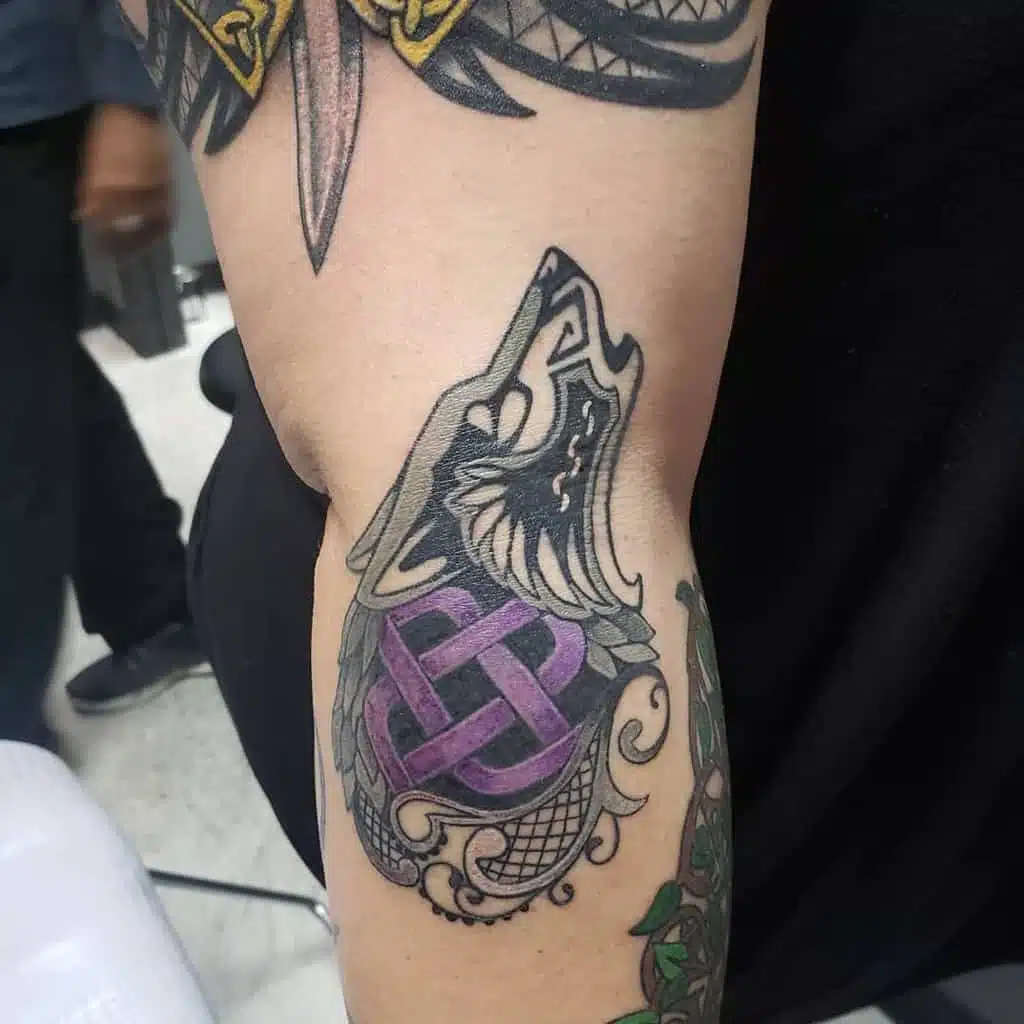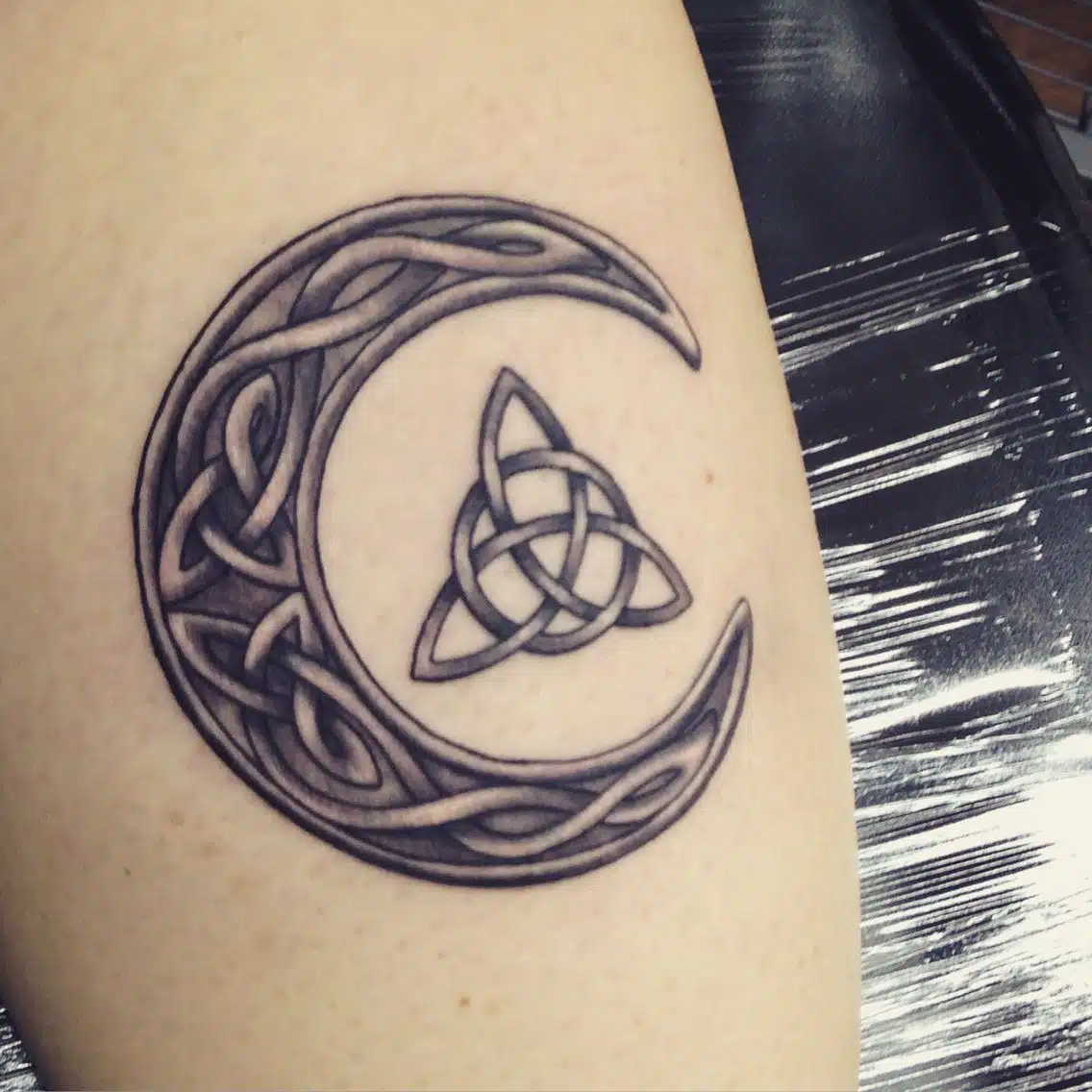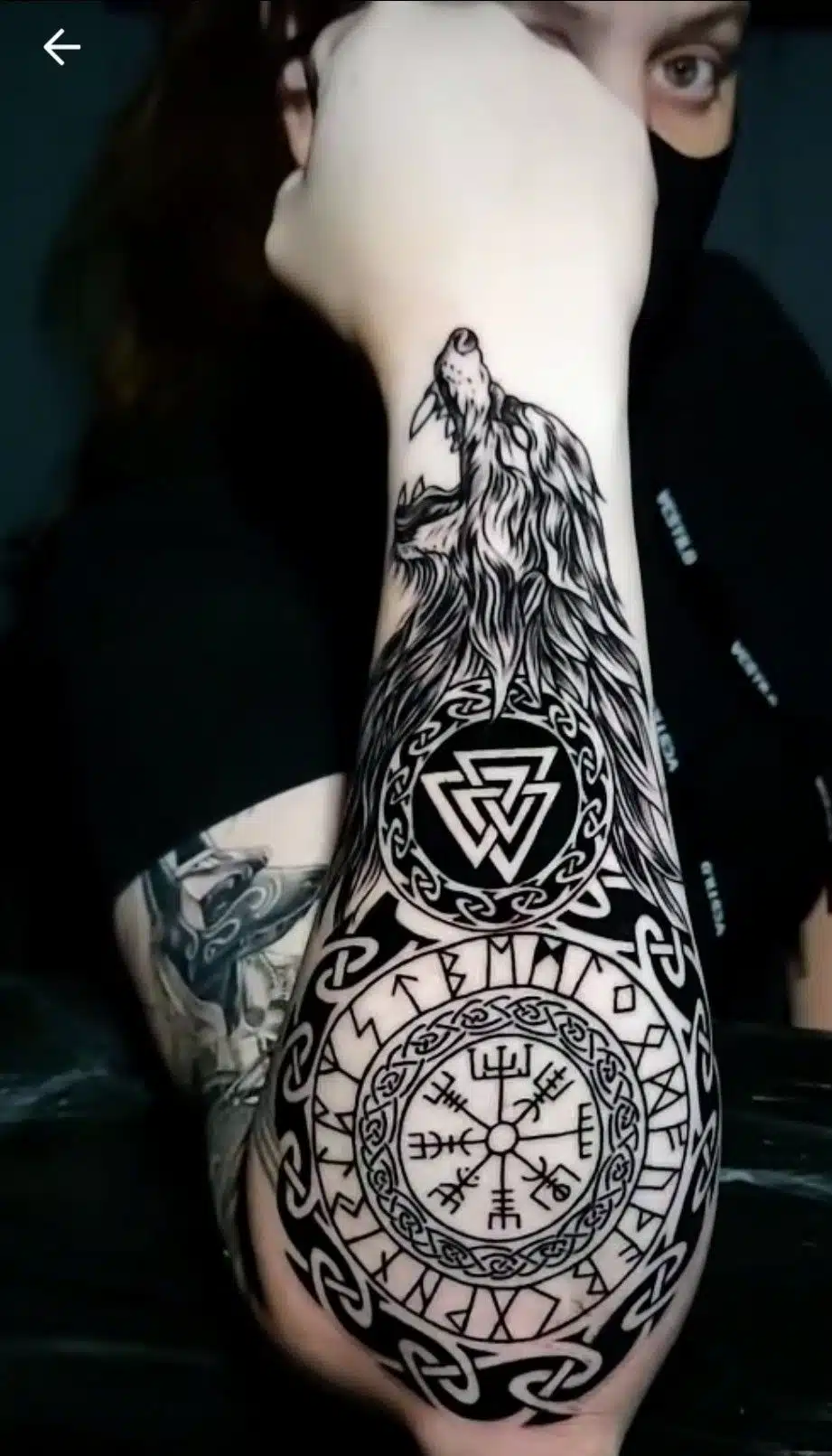Celtic tattoos are a popular form of body art that has been embraced by people all around the world. These tattoos are not just aesthetically pleasing, but they also carry deep meaning and symbolism that reflects the rich cultural heritage of the Celtic people. From intricate knotwork to powerful animal motifs, Celtic tattoos have a unique style and design that has captivated people for centuries. In this article, we will explore the meaning and symbolism behind Celtic tattoos, their origins, and the significance of the various designs and motifs that are commonly used in this form of body art.
Are you only interested in tattoo designs and want to skip the educational part?
No problem, we got you covered! Click HERE to get inspired.
what do celts symbolize?
The Celts were a diverse group of people who lived in Europe between the 8th century BC and the 4th century AD. They had a rich cultural and spiritual tradition, and many symbols were significant to them. Here are some of the most common symbols associated with the Celts:
Triskelion - The triskelion, or three-legged spiral, is a symbol of the three realms of existence: earth, sea, and sky. It is also a symbol of motion and change.
Knotwork - Knotwork is a series of interwoven lines and shapes that have no beginning or end. It represents the interconnectedness of all things and the continuity of life.
Celtic Cross - The Celtic Cross is a symbol of Christianity that incorporates elements of Celtic art and culture. It is often decorated with knotwork and other designs.
Shamrock - The shamrock is a three-leafed clover that is a symbol of Ireland and the Irish people. It is also associated with the Christian Holy Trinity.
Boar - The boar was a sacred animal to the Celts and was associated with strength, courage, and fertility.
Dragon - The dragon was a symbol of power and wisdom. It was also associated with the elements of earth, air, fire, and water.
These are just a few of the many symbols associated with the Celts, and their meanings can vary depending on the context and culture in which they are used.
The meaning and symbolism behind Celtic tattoos
Celtic tattoos are frequently seen as a symbol of strength and vitality. They can also be interpreted to mean protection or connection to Celtic heritage. Celtic knot tattoos, in particular, often represent an eternal relationship between two people or humans and nature. Thus, they become synonymous with ideas of eternal life.
Celtic symbols were historically used to communicate and typically referenced natural phenomena such as water, air, the sun, the moon, etc. This is also part of what made them so popular. Celtic knots - among the most ubiquitous symbols - can represent life, death, eternal life, and spirituality.
Celtic tattoos are popular because they can be very versatile. They can be large or small and can be done in a single color or multiple colors. Celtic tattoos can also be combined with other styles to create a unique look.
History and origin of the Celts
Celt generally refers to speakers of Celtic languages today rather than to a single ethnic group. The history of pre-Celtic Europe and Celtic origins are debated, but it is generally accepted that the Proto-Celtic language arose in the late Bronze Age Urnfield culture of central Europe.
This theory links the Celts with the Iron Age Hallstatt culture and the La Tène culture, both named for archaeological sites in Austria and Switzerland, respectively. It proposes that Celtic culture spread through diffusion or migration westward to Gaul, the British Isles, and Iberia and southward to Cisalpine Gaul.
A newer theory, "Celtic from the West," suggests Proto-Celtic arose earlier, was a lingua franca in the Atlantic Bronze Age coastal zone and spread eastward. Another newer theory, "Celtic from the Centre," suggests Proto-Celtic arose between these two zones in Bronze Age Gaul and then spread in various directions.
After the Celtic settlement of Southeast Europe in the 3rd century BC, Celtic culture reached as far east as central Anatolia, Turkey. The earliest undisputed examples of a Celtic language are the Lepontic inscriptions from the 6th century BC. Continental Celtic languages are attested almost exclusively through inscriptions and place names.
Insular Celtic languages are attested from the 4th century AD in Ogham inscriptions, though they were spoken much earlier. The Celtic literary tradition begins with Old Irish texts around the 8th century AD. Elements of Celtic mythology are recorded in early Irish and early Welsh literature.
Most written evidence of the early Celts comes from Greco-Roman writers, who often grouped the Celts as barbaric tribes. They followed an ancient Celtic religion overseen by druids. The Celts often conflicted with the Romans, such as in the Roman-Gallic wars, the Celtiberian Wars, and the conquest of Gaul and Britain.
By the 1st century AD, most Celtic territories had become part of the Roman Empire. By c. 500, due to Romanization and the migration of Germanic tribes, Celtic culture had mostly become restricted to Ireland, western and northern Britain, and Brittany.
Between the 5th-8th centuries, the Celtic-speaking communities in these Atlantic regions emerged as a reasonably cohesive cultural entity with a common linguistic, religious and artistic heritage that distinguished them from surrounding cultures. Insular Celtic culture diversified into that of the Gaels (Irish, Scots, and Manx) and the Celtic Britons (Welsh, Cornish, and Bretons) of the medieval and modern periods. A modern Celtic identity was constructed as part of the Romanticist Celtic Revival in Britain, Ireland, and other European territories such as Galicia.
Today, Irish, Scottish Gaelic, Welsh, and Breton are still spoken in parts of their former territories, while Cornish and Manx are undergoing a revival. The Celtic languages are a branch of the Indo-European language family. Celtic has been traditionally subdivided into Insular Celtic and Continental Celtic.
Best Celtic tattoo ideas and their meanings
Celtic tattoos have always been popular for their intricate designs and symbolic meanings. Celtic knots are especially popular, as they represent the never-ending cycle of life, death, and rebirth.
Trinity Knot or Triquetra Celtic tattoo: perhaps the most well-known Celtic tattoo design, and it represents the Father, Son, and Holy Spirit. Though there is no definitive Celtic symbol for family, ancient Celts used several knots to represent eternal love, strength, and unity. The Triquetra is believed to be the oldest spiritual symbol that includes family.
Celtic cross tattoo: Body art enthusiasts searching for a design with deep meaning often turn to the Celtic cross tattoo. This gender-neutral tattoo can commemorate the memory of a loved one or act as a visual representation of someone's faith. The Celtic cross is also popular among first responders.
Celtic tree of life tattoo: Trees have always been special to humans and have been seen as a symbol of the connection between heaven and Earth. They are also significant in many cultures as a representation of rebirth since they lose their leaves every year but sprout new ones come springtime.
Celtic dragon tattoo: Celtic dragons have been respected as Earth's caretakers and thus reflect the might of great leaders. At the same time, because they are mystical beings with otherworldly powers, they can also embody the enigmatic forces in our lives – leaving us to wonder if such mythological creatures are real or just figments of our imagination.
Dara Knot and the Ailm tattoo: The Celtic Ailm and the Celtic Boann symbols are Irish symbols of strength. Even though the designs of these two symbols are significantly different, their meanings convey a similar message.
Welsh Celtic tattoo: The Welsh Celtic tattoo is popular for those with Welsh heritage. This tattoo can feature the Welsh flag, the dragon from the flag, or other Celtic symbols like knots and spirals.
Scottish Celtic tattoo: The Scottish Celtic tattoo is popular for those with Scottish heritage. This tattoo can feature the Scottish flag, the thistle (Scotland's national flower), or other Celtic symbols like knots and spirals.
Celtic moon tattoo: The crescent moon symbolizes motherhood and fertility in many cultures, but it can also represent growth, creativity, and manifestation.
Celtic rune tattoo: The beginning of Celtic Runes is unknown. They have always been tied to a higher power and held great importance. You can find them on ancient stones, Viking ships, spears, cups, and many other objects. The most frequently seen ones are the carvings on pebbles.
People Also Ask:
What do different Celtic symbols mean?
The Shamrock - Ireland's national flower. The Celtic Tree Of Life - symbolizes the Druid belief in the connection between heaven and Earth. The Trinity Knot - is a symbol of eternal spiritual life, one with no beginning and no end. The Triskele - represents three stages of life: birth, death, and rebirth.
Why do people get Celtic tattoos?
Celtic tattoos were not only used for protection but also to show fierceness, boldness, and lack of emotion in battle. Celtic symbols such as single and double swirls, trinities/triquetras, and geometric shapes were also common among tattooed warriors.
Are Celtic tattoos Irish?
The Celtic symbols are some of Ireland's most famous tattoos. The actual designs have been around for centuries, as ancient Celtic warriors often got tattoos to intimidate their foes.
Are Celtic and Viking tattoos the same?
Celtic and Norse tattoos are often mistaken as one and the same because of their shared intricate designs. Vikings established early settlements in Scotland, Ireland, and the Isle of Man during the Medieval era, so it's no surprise that their artwork includes similar motifs.
Are Celts Scottish or Irish?
Celtic encompasses the languages and cultures of Ireland, Scotland, Wales, Cornwall, the Isle of Man, and Brittany, also known as the Celtic nations.
What is the Celtic word for strength?
The Celtic symbol Film is derived from the letter "A" of their ancient alphabet, Ogham. To Celts, Ailm embodies strength and resilience, with the ability to protect and purify. It also brings guidance, fertility, and good health while promoting clarity and integrity.
What are the 7 Celtic nations?
The region became modern-day Galicia, located in northwest Spain. It is believed to be the seventh of the original Celtic nations, which includes Eire (Ireland), Kernow (Cornwall), Mannin (Isle of Man), Breizh (Brittany), Alba (Scotland), and Cymru (Wales).
How do you pronounce "faith" in Gaelic?
The Gaelic word for faith is "creideamh," which is pronounced as "KRAY-jiv.
What does the Celtic knot represent?
The Celtic knot, also known as the endless knot, represents the interconnectedness of all things, as well as the continuity of life and the eternal nature of the universe.
What does a triskelion tattoo mean?
A triskelion tattoo features a triple spiral design that represents many things, including the three realms of existence (earth, sea, and sky), as well as motion, change, and personal growth.
What does the Vidar represent in Norse mythology?
Vidar is the Norse god of vengeance, silence, and the hunt. He is also known for his strength and his ability to survive in harsh conditions.
Who were the Picts and the Scots?
The Picts and the Scots were ancient tribes that lived in what is now Scotland. They were known for their distinctive art and culture.
What did the Picts look like?
The Picts were known for their distinctive body art and tattoos, as well as their long hair and beards.
What is a Trinity Knot?
A Trinity Knot, also known as a Triquetra, is a Celtic symbol that represents the Holy Trinity in Christian belief.
What symbolizes revenge?
The scorpion is often used as a symbol of revenge, as it is known for its ability to strike back when provoked.
What is the most popular Celtic tattoo?
The most popular Celtic tattoo design is the Celtic cross, which incorporates elements of both Christian and Celtic symbolism.
Watch A Time-Lapse Video Of A Celtic Tattoo Done By A Pro:
300+ Celtic Tattoo Ideas For Your Inspiration
Final thoughts
Celtic tattoos are popular among those with Celtic heritage. These tattoos can feature Celtic symbols like knots and spirals, the Scottish or Irish flag, or other meaningful designs. Celtic tattoos are often seen as a way to show strength, boldness, and resilience. If you're considering a Celtic tattoo, research a design with personal meaning.

